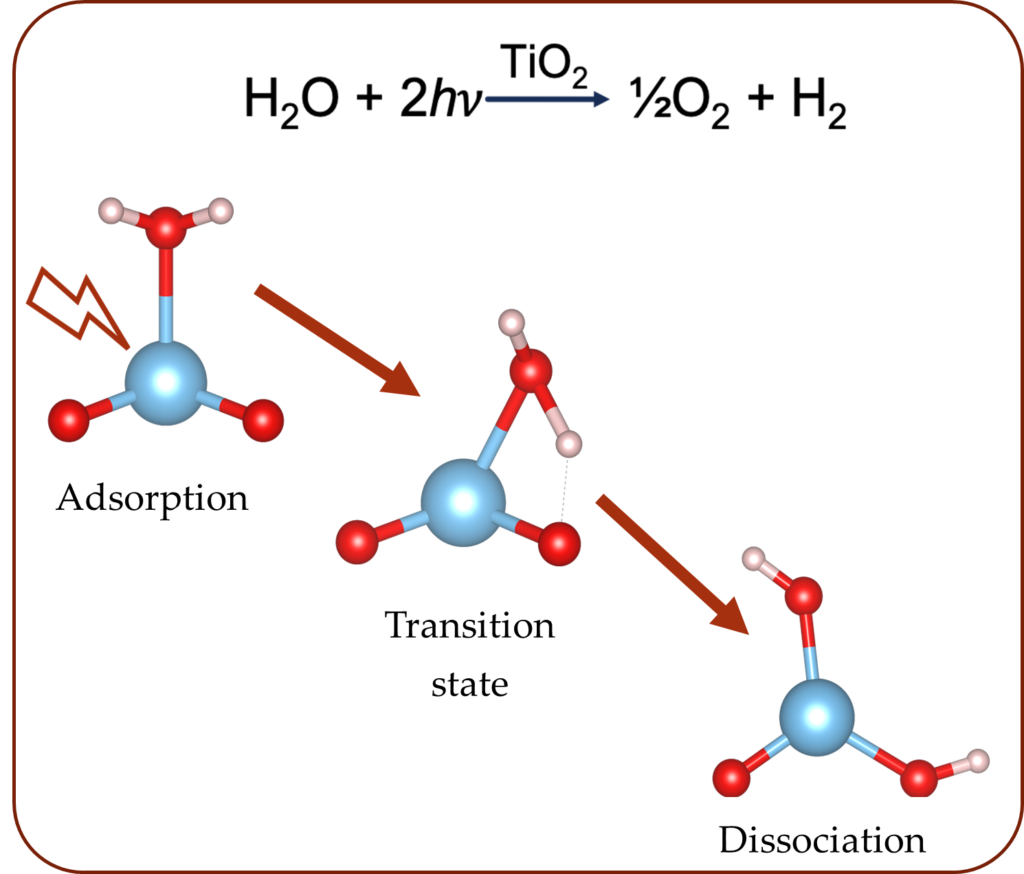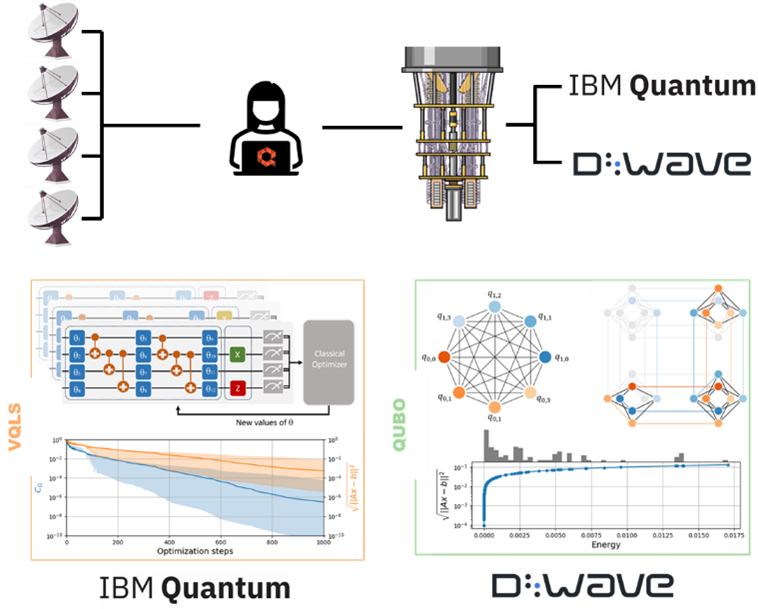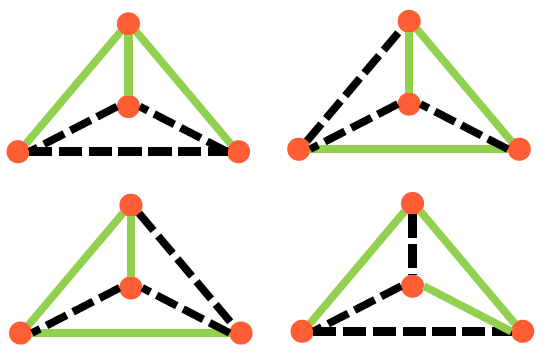The Problem
Toyota Motor Europe, in collaboration with QAL, is delving into the realm of photocatalysis for water
splitting, a pivotal process in the sustainable production of hydrogen. The accurate simulation of
photocatalytic reactions stands as a complex, resource-intensive endeavor that demands innovative
computational methodologies.

Schematic diagram illustrating the process of a prototypical photocatalytic water splitting reaction: a water molecule is adsorbed on the catalyst, enters a transition state, and subsequently the water molecule is split into two. This is the rate-determining step in this reaction.
The Quantum Solution
The project employs a state-averaged orbital optimized variational quantum eigensolver (SA-OO-VQE) to calculate the interaction energies of heterogeneous photocatalysis for water splitting in the ground as well as excited states. This advanced quantum algorithm allows for the precise and efficient modeling of complex photocatalytic processes, providing an unprecedented level of detail and insight into the interactions at play during photocatalysis.
The Benefits
Being able to simulate chemical processes, such as the splitting of water into hydrogen, promises to be one of the main future applications of quantum computing. The use of quantum computing facilitates description of both ground and excited electronic states in the same footing, an essential ingredient for modelling photocatalysis reactions. It not only enhances the accuracy of the calculations but also provides profound insights into the reaction mechanisms, thereby expediting the research and development process. Calculations were run on a quantum emulator and as the collaboration continues and hardware advances, we expect to be able to model larger and more-realistic systems.
Contacts
Toyota Motor Europe, sachin.kinge@toyota-europe.com



